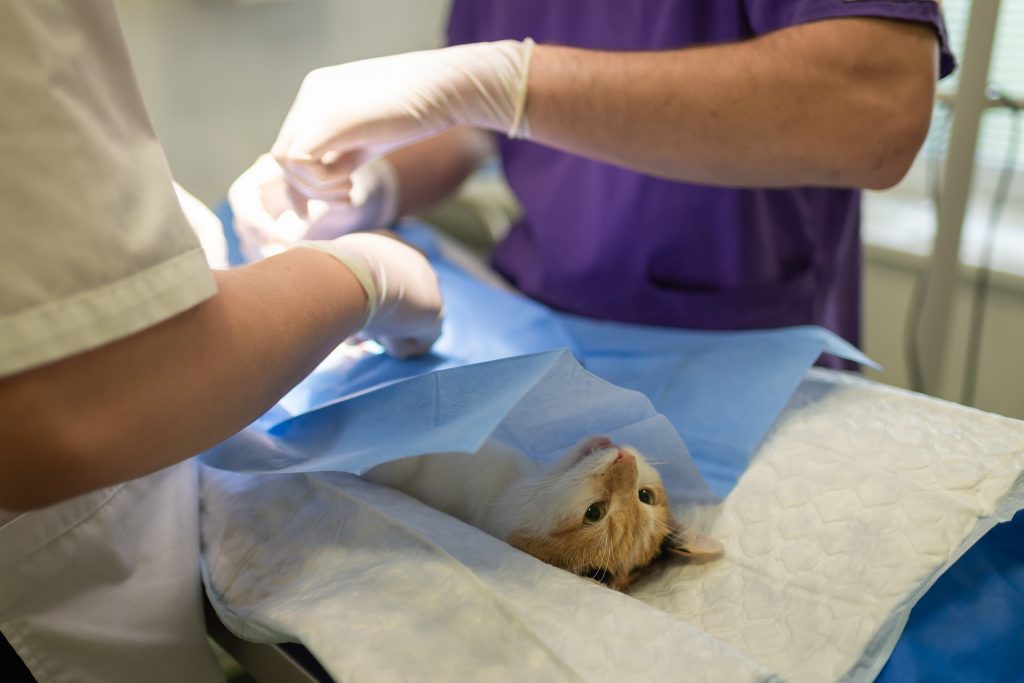Just when you thought things could not get more confusing with choosing your health insurance, along came pet insurance! It is coming to the attention of pet owners that it is necessary to insure their precious pets as well so that they can receive the highest quality of care in the event of an unexpected tragic illness or accident.
There were 1.4 million insured pets in the U.S. as of 2015. This sounds like a lot, but it’s only a fraction of the estimated 70-80 million dogs and 74-96 million cats kept as pets.
If you don’t want finances to play the major role in deciding what you should do for your pet, pet insurance makes those decisions easier. Tell your veterinarian that you have pet insurance. This will make them more likely to at least give you the option of doing everything that might be possible for your pet. Whether your pet gets the care it needs, in cases of disease and accidents, can depend on having pet insurance.
There are certainly cases where a pet has to be euthanized or get less-than-ideal treatment because of finances. When finances dictate what an owner can do, sad situations will get much sadder.
Common excuses
So why do only a small percentage of pet owners opt for coverage?
Maybe they don’t feel it’s worth it, don’t think their pets need it, or don’t know where to even begin. Health insurance for humans can be confusing enough, and it’s no different when it comes to pet insurance. A friend of mine had a Rottweiler who developed cancer. This is a breed that is predisposed to the disease. When she got a second Rottie, she insured her dog. Sadly, this dog developed the dreaded disease as well.
However, because of her pet insurance, she was able to give her beloved dog the highest level of required treatments, and as a result, both she and the dog had additional quality time together. She chose an insurer that met her own personal needs, and she told me that she was thrilled with the insurer she chose and the financial assistance that she received during this very difficult time.
Consider this
Here is some information that I hope will be helpful if you are considering insuring your pet.
- Pet insurance doesn’t cover all your pet’s veterinary care. The first thing you should keep in mind when shopping around for insurance for your furry companion: Pet insurance doesn’t cover all your pet’s veterinary services. Some insurers, like Petplan, do not cover your pet’s routine care in their plan options. Rather, their policies are intended to help cushion the cost of an unexpected illness or injury. Other providers, like Healthy Paws Pet Insurance & Foundation, don’t cover the veterinary exam fee, or preventive care like spaying or neutering.
- Pre-existing conditions are also exempt from coverage through most, if not all, providers. You should avoid plans with breed restrictions. Avoid plans that have a fee schedule, such as a list of common illnesses and treatments that the insurance company reimburses based on what they think a procedure should cost. This is often very different than what is commonly charged, and can leave owners owing more that they might otherwise. Plans covering a percentage, say 80% of the bill, are good choices.
Navigating the levels
There are different levels of plans. Basic plans can be as low as $10 a month and can help cover your pet’s preventive care, such as vaccinations and annual wellness exams. Medium-level plans at start at around $34 a month and, beyond covering basic care, may also cover certain conditions, surgeries, and hospitalizations. Pet owners can also opt for the highest level of coverage, which can cost as much as $100 a month. These plans typically cover accidents, injuries, non-routine veterinary exams, cancer treatments, and medication. The level of coverage you should get all depends on what you are comfortable paying for yourself, and what you want covered by your policy. Opting for a plan that only covers major occurrences can lower your bill. This would lower monthly costs, but mild illnesses may not be covered.
Do some comparisons
Still not sure? PetInsurance.com provides a handy chart that compares their three levels of plans, what conditions they cover, and how much coverage they provide.
Also, keep in mind that some pet insurance plans require that policyholders meet a deductible before the plan pays out, such as the $250 required deductible for a dog under five years of age through Healthy Paws. So be sure to do your research and shop around. With the amount of specific terms, options, and inclusions and exclusions that exist when it comes to pet insurance, not having the proper amount of coverage could leave you with a massive vet bill.
Also note that advertised premiums will not necessarily be the premium you pay. Factors such as the pet’s breed or even your location will affect your quote. Age is also a major factor, so if you have older pets, your options may be limited. Not only will you likely have a higher premium, but you may need to opt for one of the higher levels of insurance, since an older pet often requires more veterinary care.
Reimbursement varies
While you may think that your deductible is the only out-of-pocket cost you’ll pay with pet insurance, think again.
Most plans only cover 70-90% of covered illnesses or injuries, which means that you will still be left with a bill when all is said and done. Keep in mind that there is often a waiting period (usually a few days, but can be upward of two weeks) before your policy kicks in. And if your pet is due for an annual checkup, you’ll need to schedule one before your policy is effective.
Networking
You don’t have to be ‘in-network.’ One good piece of news: You likely won’t have to worry about switching vets or picking a plan that your vet accepts, either. Unlike health insurance for people, veterinarians can generally accept all pet insurance plans, because the claims process works a lot differently. When you go to a doctor, they submit a claim to your insurer on your behalf, and they need to have a relationship with that insurer. With pet insurance, you submit claims yourself. If there is ever any doubt, you could always confirm with your veterinarian before enrolling in a particular plan.
Help from employers
Employers are starting to pay attention. More companies are recognizing that their employees consider pets to be members of the family, and have begun offering pet insurance discounts as part of their benefits packages. Even if your employer does offer such a discount, it’s important to thoroughly research the insurer and compare other plans before making your final decision. Even with a discount, the insurer your company works with might not be the best option for you and your pet.
So do your research, shop around, and make the decision that best suits you and your pet.
Dog bless.
Resource: Marketwatch.com

Judy Endo is the author of Paws-itive Pet Tales. A lifelong resident of the Wilkes-Barre area, she has been a professional dog trainer/competitor as well as a lifetime animal lover and strong supporter of animal rescue. Contact: judyendo@outlook.com




